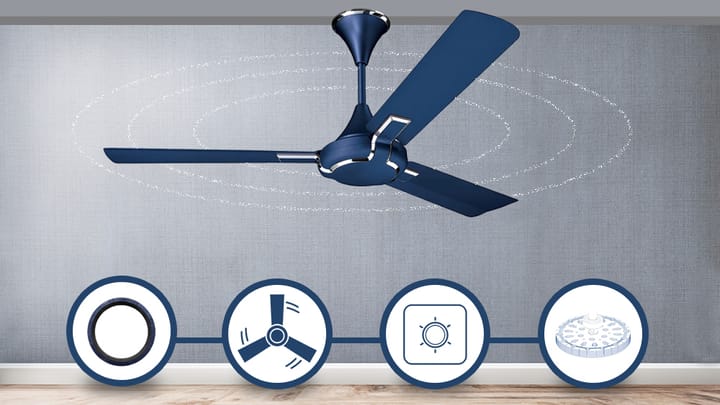Why India's Energy Future Hangs in the Balance? (Part III)
While initiatives like Demand Side Management and energy efficiency programs are crucial for driving sustainable growth, the sector’s deeper structural challenges cannot be ignored.

While India’s power sector has seen remarkable growth and progress, it is not without its share of challenges. As the country puts in efforts to meet increasing energy demands, underlying issues like an ageing infrastructure, the widening demand-supply gap, and regulatory inefficiencies continue to hinder its progress. These challenges are not just technical hurdles—they carry far-reaching implications for the Indian economy, threatening to stall the momentum of its energy transition. In this final part of the series, we will explore the critical issues plaguing India’s power sector, and examine how these problems wave through the economy.
Issues in the Power Sector:
i. Generation:
Generation capacity has increased over the years. The installed capacity which was 305.15 GW in 2015-16 has been increased to 434.2 GW in 2023-24.
- Installed capacity of coal-based generation has been increased from 185.2 GW in 2015-16 to 210.97 GW in June 2024.
- Installed capacity of thermal power has increased from 139.66 GW in March 2014 to 242.99 GW in July 2024.
- Installed capacity of the Renewable sector has increased from 75.519 MW in March 2014 to 197.2 GW in July 2024.



The steady increase in installed capacity indicates significant advancements in power generation infrastructure, yet the rising peak demand and growing deficit percentage highlight ongoing challenges in meeting energy needs and ensuring grid reliability in India's power sector a necessity.
ii. Transmission:
Transmission infrastructure affects Power Supply. As of July 2024, the all-India transmission lines are 487,587 lakh circuit km long of transformation capacity.
The length of transmission lines has increased over the years to meet the growing demand for power and generation capacity. From 2013-14 to 2023-24, the overall line length increased from 291,336 ckm to about 487,587 ckm, recording a compound annual growth rate (CAGR) of 7.5%.
- Transmission losses in India are relatively lower compared to distribution losses.
- According to the Ministry of Power, Government of India, AT&C losses have been a significant issue for the Indian power sector. As of the fiscal year 2023-24, the AT&C losses in India drop to 15.41%. These losses include technical losses due to energy dissipation in conductors and equipment, as well as commercial losses due to theft and billing inefficiencies.
- Under the ongoing program of the government, it is objected to reduce the aggregate technical and commercial (AT&C) losses across the country to 12-15% by FY 2024-25.
iii. Distribution:
The financial situation of India's distribution utilities has been poor, with the sector consistently making large losses.
- Distribution losses in India are higher due to various factors such as outdated infrastructure, power theft, and inefficiencies in the distribution network.
- As of November 2023, India's transmission and distribution (T&D) losses for the 2023-2024 year were 0.3% (2,980 MU), which is lower than the 0.6% (5,705 MU) recorded during the same period in 2022-2023.
- The ideal level of T&D losses is between 6-8%, but India's losses have historically been more than double the global average, at over 20% of generation. (Ministry of Power)
As per the 'Report on Performance of Power Utilities' published annually by Power Finance Corporation Ltd. (PFC), Financial Losses of distribution utilities have come down from Rs. 46,521 crores in FY 2020-21 to Rs. 31,026 crores in FY 2021-22.
Impact of these issues on India's economy
The challenges faced by the power sector in India have significant impacts on the economy, including:
i. Reduced industrial growth: The lack of reliable power due to challenges like fuel supply uncertainty and inefficient distribution companies hampers industrial growth, investment, and economic competitiveness.
ii. Financial burden on the government: The poor financial state of DISCOMs and the need for government interventions to support them put a strain on public finances, affecting overall economic stability.
iii. Inefficiencies in power transmission: Insufficient transmission infrastructure and grid reliability issues lead to power deficits, affecting industries and businesses that rely on a stable power supply for operations.
iv. Impact on consumer tariffs: Challenges like high AT&C losses and differential tariffs can result in increased electricity tariffs for consumers, impacting household budgets and overall consumer spending patterns.
v. Dependency on imported fuel: Shortages in domestic coal supplies lead to a dependency on imported fuel sources, increasing costs for power generation and potentially impacting the trade balance of the country.

Addressing these challenges is crucial not only for the sustainable development of the power sector but also for ensuring a stable and thriving economy in India.
As we’ve explored in this series, India’s power sector stands at a key juncture. While initiatives like Demand Side Management and energy efficiency programs are crucial for driving sustainable growth, the sector’s deeper structural challenges cannot be ignored. Addressing issues like transmission bottlenecks, regulatory gaps, and rising demand is not only essential for securing the country’s energy future but also for ensuring economic stability and growth.
GreenLetter (GLSept24):
Writers: Shivani Rani, Shikha Saxena
Reviewers: Dr. C S Azad, Anurag Bajpai, Dhruv Jain


Follow our activities on Twitter | Linkedin | Youtube | Instagram | Facebook


